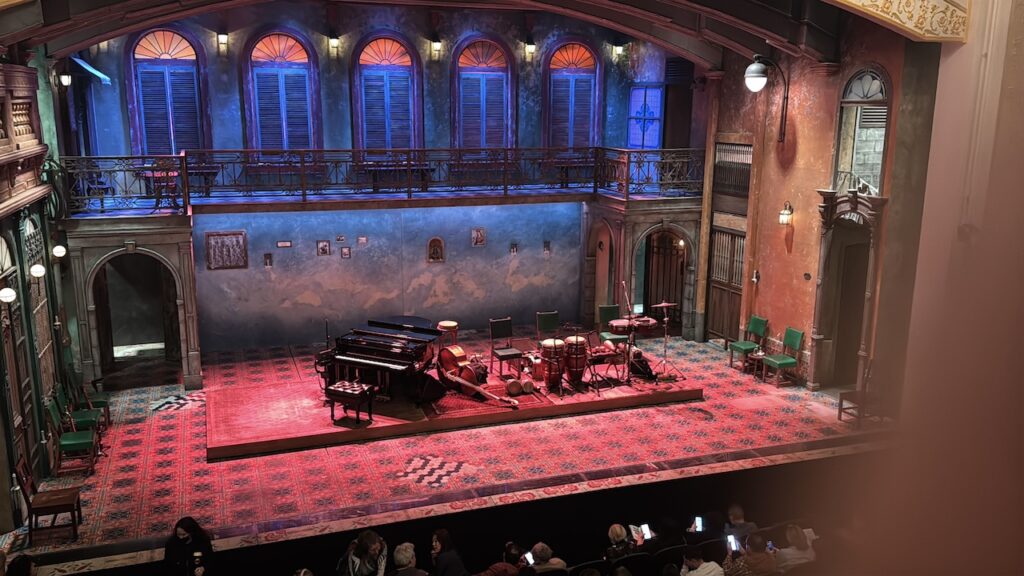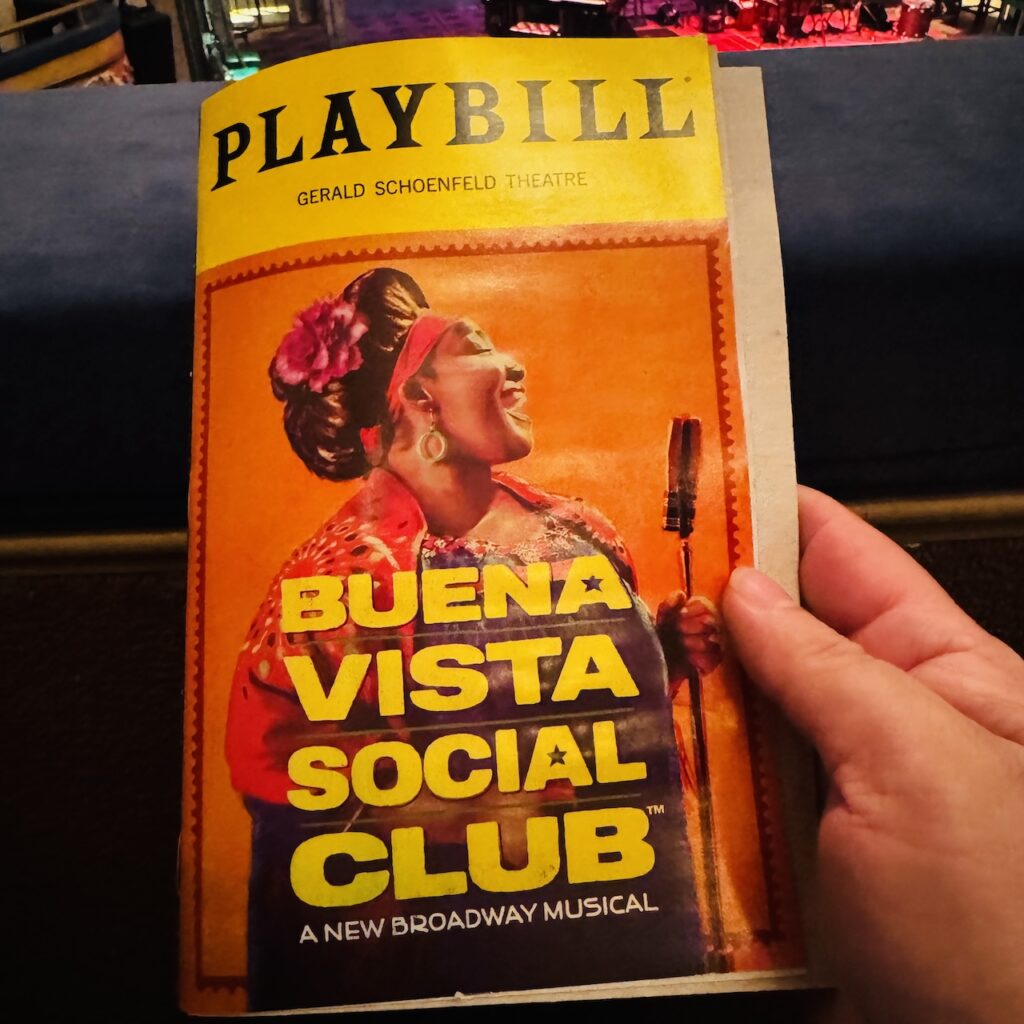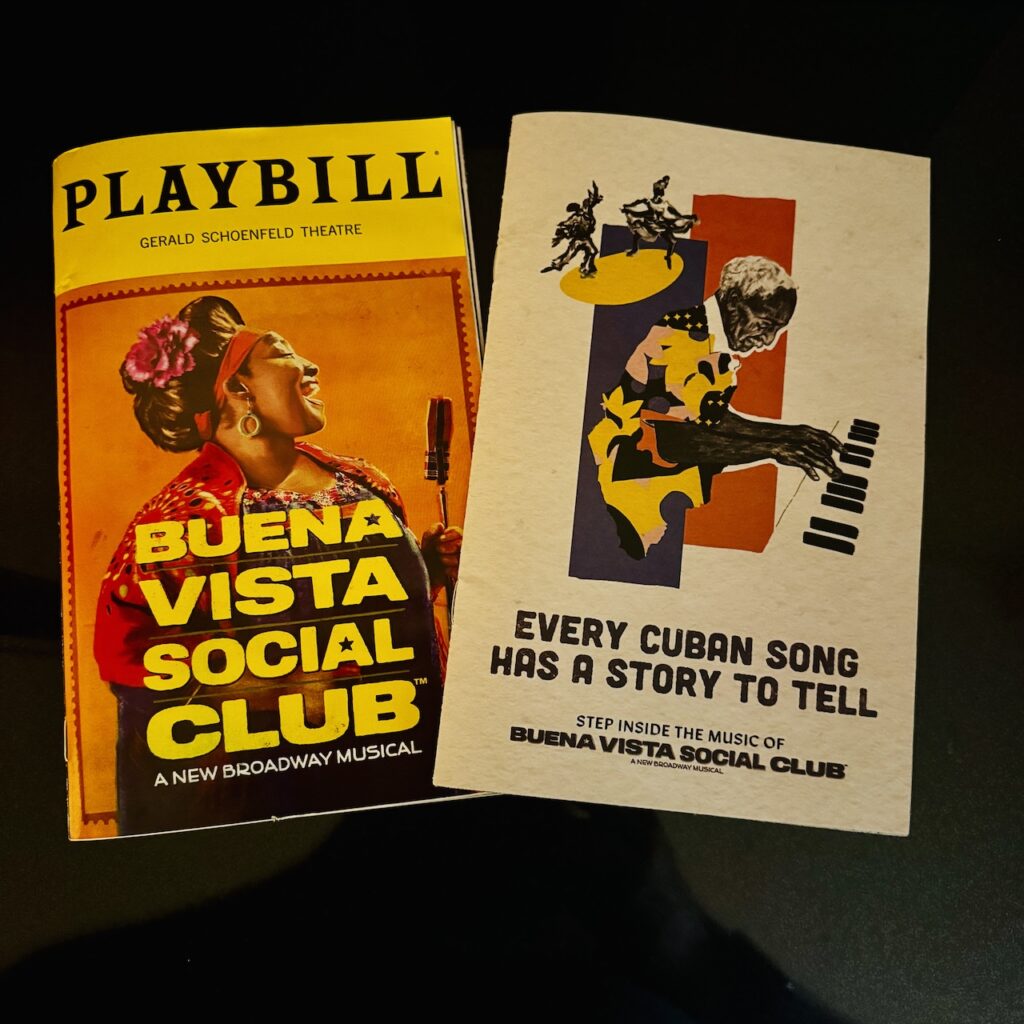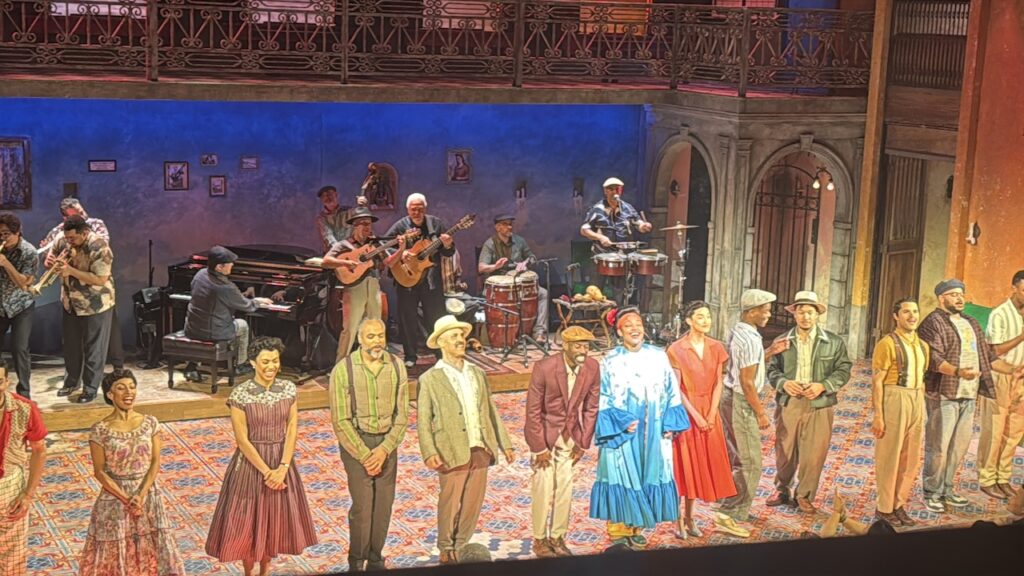00062: BUENA VISTA SOCIAL CLUB (Broadway Musical Review)
I knew that attending a musical about Cuban music was going to be contagiously fun and entertaining. I also knew that the new broadway musical, Buena Vista Social Club was going to be a story about the musical group’s history and their songs. What I didn’t know was that such musical was going to not only give me a very illuminating lecture on that history, but also carried me through the member’s social-economical, racial, cultural, and emotional journeys of this internationally known musical group.
As soon as the musical company members appear on stage, the audience knows we are in for a true musical journey. To start, the orchestra (in this case, the musical “instrument members” of the Buena Vista Social Club) are on stage from start to finish. The band opens and closes the show with two very contagious, very entertaining, and very upbeat songs. And as soon as our narrator appears (Juan de Marcos played by Justin Cunningham) on stage to tell us the story of the music group, we are transported to Havana, Cuba between the years 1958 and 1996.
The musical is about how this group of musicians came together in 1996 to create their now infamous album. But it is through the character, Omara Portuondo (played by two actresses: Youn Omara by Isa Antonetti in 1958 and Omara by Natalie Venetia Belcon in 1996 (nominated for Best Feature Actress in a musical) that we are transported to the days when these musicians were young, energetic, and full of life artists fighting to survive in a Cuba that was about to explode and change the country and its habitants forever.
If you want to know about the history, how the group came together, and more, watch the 1999 and 2017 documentaries. The album from the club was release in 1997 by 1998 they were an international success. The documentary, titled “Buena Vista Social Club,” includes interviews with members of the band as it follows them through their two main lineup concerts, one in Amsterdam and one in NYC at Carnegie Hall. And then, 16 years later, a second documentary titled, “Buena Vista Social Club: Adios,” follows five of the original band members from the first film as they go on one final musical proyect, as it recalls their ups and downs over the years. And now that the “history lesson” is over, I must get back and talk why this new Broadway musical received 10 TONY nominations including one for Best Musical.
Whether the story being told on stage, about the musicians and their lives and relationships is true or not, what makes this musical not only engaging but also deeply moving is the book written by Marco Ramirez, nominated for a TONY for Best Book of a Musical. The way he weaves the story and connects it to the characters’ lives, their emotional path and decisions is so clear and strong that when a musical number (an original song from the Buena Vista Social Club is performed) that song–sang completely in Spanish–soars in the air with meaning and emotional gravitas. Yes, the music is contagious and uplifting but the meaning behind the songs are far more emotional and weight heavy on us as we connect each musical number to a situation created by the character’s lives.
Through the witnessing of the characters’ lives in 1958 and the band reunion in 1996, we not only witness great musical art in the making but we also learn about racism, social class, discrimination, colorism, revolt, and about a Cuba that is about to become what it is today. To me, though, what truly grabbed me from the start and did not let me go, not even after I left the theater, was the choreography by Patricia Delgado and Justin Peck (also nominated for a TONY), which not only combines the sensuality and rhythms of music genres such as son, boleros, and danzón, but also the internal emotional turmoil the characters are experiencing.
When Young Ibrahim, played by Wesley Wray sings for the first time, the song, “Bruce Maniguá” the music and choreography are combined with rhythms and movements that invoke the harshness of slavery and the realities of being a black person, who might be “free” but still is oppressed because of their skin color. It is here, in this song, with a choreographed dance filled with sensuality and raw, sharp movements, where without noticing, tears ran down my face. From then on, I completely surrendered my entire being to the musical experience and storytelling. All this is due because the story is very moving, emotional, and palpable, and because of the characters’ struggles and situations grab you from the start and do not let you go until they are done with their stories, their dancing, and their singing.
But the story, the singing, the acting, and the dancing are not the only stars of this musical. There is also lighting, costumes, sound, and set design. All of these technical elements come cohesively together to highlight the musical’s themes and messages, and to create the mood, the atmosphere, and focus needed within each scene and throughout the story. Every technical element is not only designed with clarity and purpose but it is also executed with exactitude, enhancing the power of the music, underlining the beauty of the story, and highlighting the poetry of the songs.
The musical received 10 very well-deserved TONY nominations that also include, best director, best orchestration, best scenic design, best costume design, best lighting design, best sound design, and of course, best musical. I have not had the opportunity to see all the musicals that were nominated for best musical category. Unfortunately, I won’t see them all, but I can comfortably say that Buena Vista Social Club is in fact, a very strong contender in the Best Musical Tony Award category. As a side note, the musicians who make up the musical’s band “Buena Vista Social Club” will receive a Special Tony Award for their work.
Whether the musical receives the big prize or not, what it is needed now is a pro-shot recording of this production. There is so a lot to learn and discuss from its music, songs, characters, story, and from these great Cuban artists, as well as from the creators of the show and the artistic team, that seeing the show once is not enough. And because of its importance and influence in the music world, the musical needs to be accessible to every one around the world. “Every Cuban Song has a Story to Tell” is a caption found in an program’s insert that contains a letter from Juan de Marcos and explanations of the songs. As a Broadway musical, Buena Vista Social Club, like the album from 1996 and the documentaries from 1999 and 2017, deserved to be recorded and preserved for future generations to witness, to enjoy, but overall, to understand how these wonderful musical artists created music that connects with the world.
A taste of the energy of the show!




Leave a Reply
You must be logged in to post a comment.